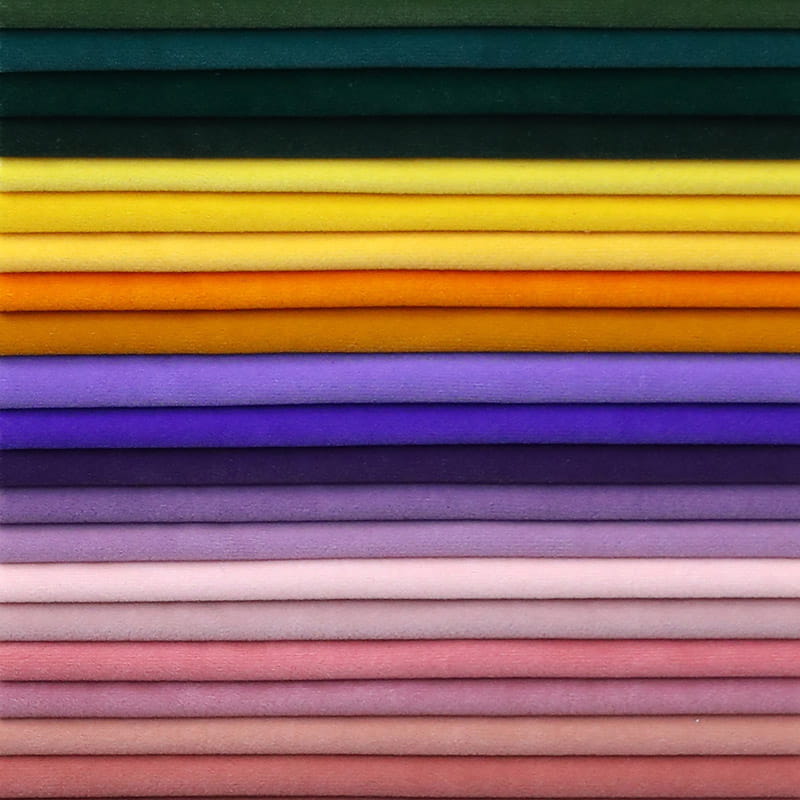

From fiber to finished fabric, the processing stage can […]
From fiber to finished fabric, the processing stage can be divided into four stages: spinning, weaving, weaving, dyeing, printing (Scouring & Bleaching, Dyeing, Printing) and finishing (Finishing)
Now the defects that may occur in each stage, using the general name of the factory, are described below in terms of their appearance characteristics and the reasons for their generation:
1. Belong to the fiber raw material and yarn count
2. Belonging to the reason of weaving
3. Belong to the reason of printing and finishing
4. Producers who are difficult to belong to and professional processors
1. Belong to the fiber raw material and yarn count
(1) Cotton (Nep)
Appearance: The cloth surface is similar to the size of the cotton fiber, and it is spun into the yarn. If you pull it off, the yarn will break or will break. Rovings woven from low-grade raw cotton often have such defects.
Causes:
1. There are dead cotton fiber clusters in the raw cotton, which were not completely removed during the flower cleaning process.
2. The needles of the cylinder or the needle board are not sharp enough when carding, or the gap between the two is not set properly, and the carding function cannot be fully exerted.
(2) Seeds
Appearance: The fabric surface of pure cotton or cotton fiber blended with small black or dark non-fiber fiber fragments.
Causes:
1. Ginning process When the cotton fiber is separated from the cotton seed, the root of the fiber has cotton seed skin, or the cotton seed is crushed and admixed with the raw cotton.
2. The process of flower cleaning failed to completely remove the cottonseed skin.

(3) Thick knot (Slub)
Appearance: On the warp or weft of the fabric, there are occasional clusters of fibers with a length of about 5 to 20 mm that are thicker than the normal diameter of the yarn and have fewer twists.
Causes:
1. In the roving fed during worsted spinning, the density within the fiber is uneven, and there are smaller dense shuttle fiber bundles.
2. The top rollers and aprons of the spinning machine cannot hold the roving uniformly.
(4) Flyer
Appearance: It is similar to thick knot, but it is thicker, not as slender as thick knot, and the fiber is clumpy. The yarn is slightly untwisted so as not to break the yarn.
Cause: The fiber mass floating in the air in the spinning room, or the fiber mass accumulating on the nearby table fed by the machine and entangled on the yarn.
(5) Cockled Yarn
Appearance: In a section of yarn about the width and length of the fiber, there are large thick knots at intervals. The thickness of the yarn changes like a slub. It is generally more common in the weft yarn of the roving fabric, so it is also known as slub weft.
Causes: The draft roller of the spinning machine is set to be too tight, the roller cover is too loose, and the roving fed has occasionally fibers of different lengths.
(6) Uneven yarn count (UnevenYarn)
Appearance: Observed from the long side of the fabric, the woven yarn has uneven thickness. Generally occurs in weft yarn.
Causes: The yarn spun by the spinning machine, due to the failure of the drafting mechanism or poor performance, the spun yarn is in a period of time, sometimes thicker and slightly thinner.
(7) Cloud weave (ClouddofWeaaving)
Appearance: The count of weft yarns is significantly uneven. The thicker or thinner are exactly arranged together when weaving to form a sheet. The appearance of the cloth is like a piece of cloud, so it is called Yunzhi.
Causes: Weft yarns have regular unevenness, and the weft yarns are arranged to be thicker or thinner when weaving.
(8) Fiber Spot (FiberSpot)
Appearance: dyed fabrics, with a small amount of fibers in the fabric surface that are not colored, or lightly colored, but appear white.
Causes:
1. There are dead cotton fibers in cotton fibers.
2. During the spinning process, due to negligence or improper control, a very small amount of polyester fiber is mixed. When dyeing without using disperse dyes and non-high temperature dyeing, the polyester fiber will not be colored.
(9) Different batch numbers (DifferentIots)
Appearance: chemical fiber yarn or chemical fiber processing silk fabric, blended yarn fabric, the count and thickness of the yarn are in accordance with the regulations, but after dyeing, there are distinct boundaries between the warp yarns or the weft yarns in different color shades.
Causes:
1. Although the count and density of the blended yarn used in weaving meet the regulations, the blending rate of the fibers in the yarn is different, and there is a difference in color depth after dyeing.
(10) Poor steamed yarn:
Appearance: E / C blended fabric, after desizing, scouring, and bleaching, the width of the fabric varies with width and width.
Causes:
After the spun yarn is dropped into the spun yarn, it needs to be steamed with high-pressure saturated steam in a closed container to stabilize the physical properties of the yarn. If the temperature or time of the steamed yarn is insufficient, and the yarn cannot be shaped, after the steaming and scouring, the fabric surface will be tight and loose for a while.
(11) White spot:
Appearance: The dyed fabrics have uncolored fiber masses on the surface of the fabric, especially those with medium and dark colors.
Cause: Mostly occur in middle and lower grade cotton dyed cloth, and the cotton particles formed by dead cotton fibers in the yarn cannot be removed when scouring and mercerizing. When dyeing, this kind of dead cotton fiber has poor colorability, so it is difficult to dye and show white spots. Recently, the fabrics woven by pure cotton starting spinning under 20Ne often occur during dyeing.